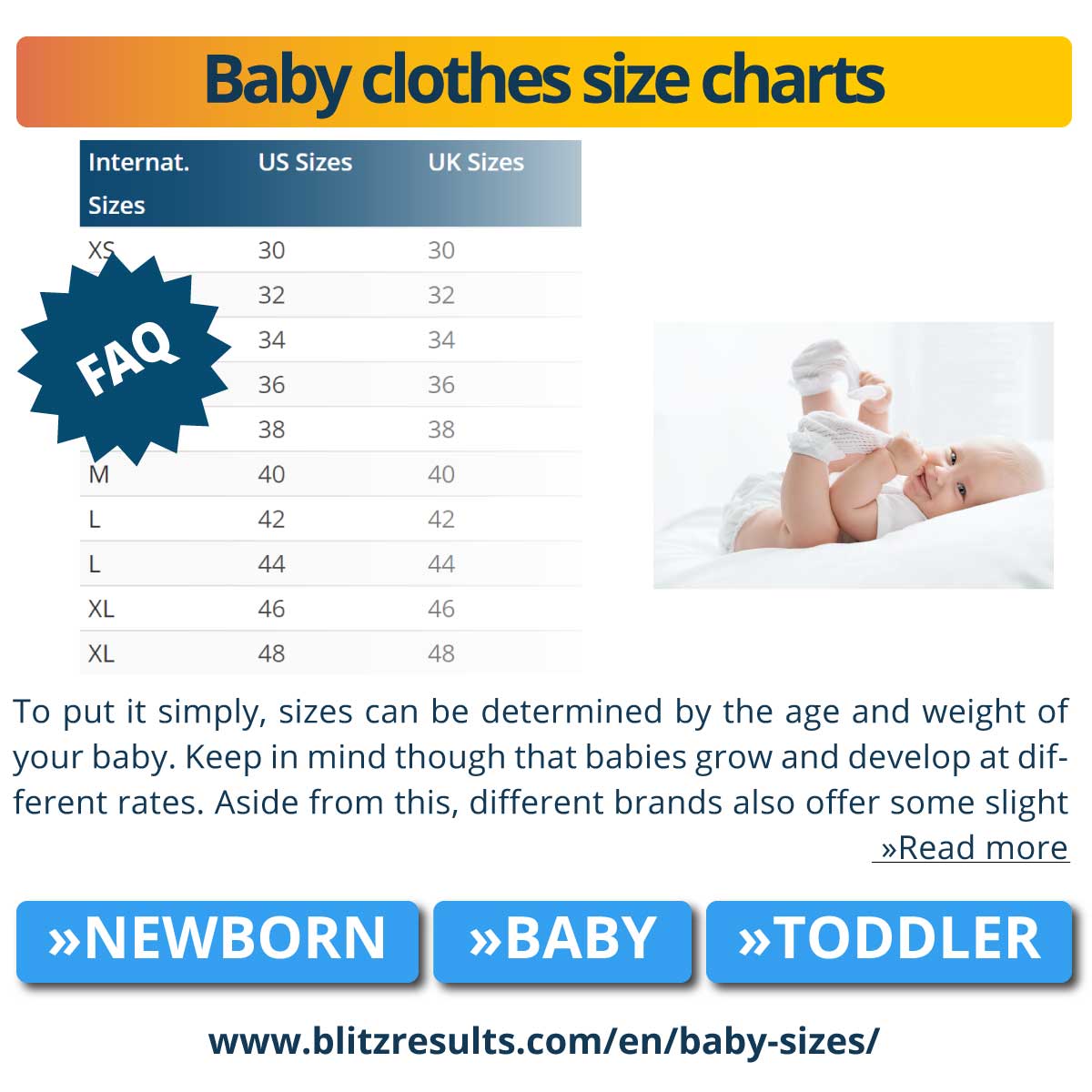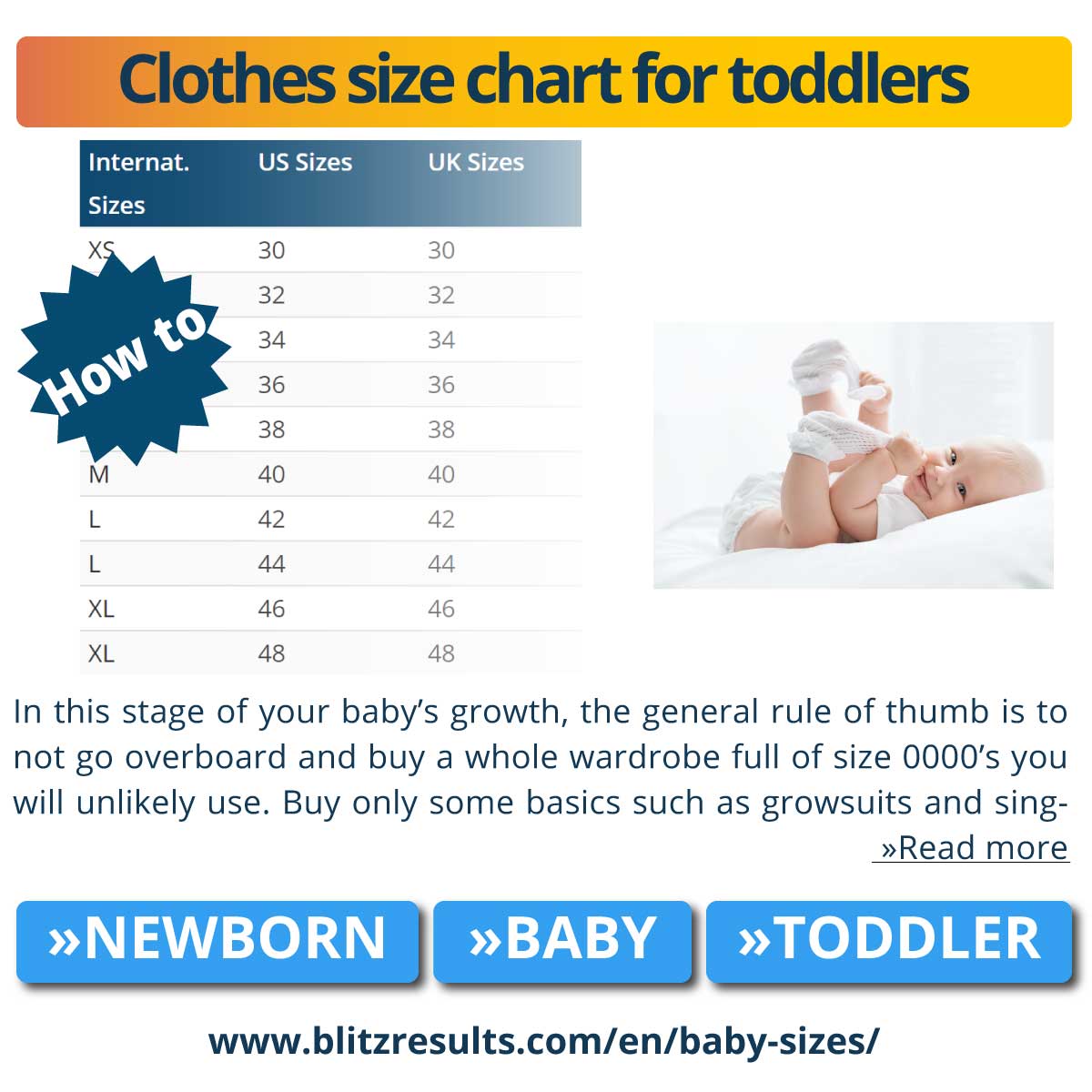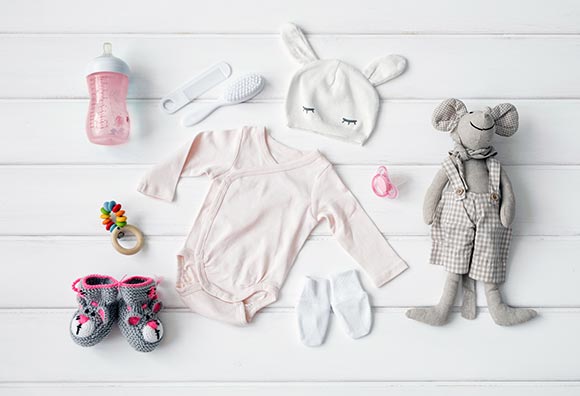How Much Is 17 Inches in Baby Clothes
Baby Size Charts | By Age, Height | Boys, Girls
One of the challenges of beginner parenting comes in the seemingly mundane topic of baby clothes sizes. Sizes can be confusing for adult wearers, how much more for babies? Don't fret, we are about to make it simpler for you! From newborn stage to toddlerhood, here's the ultimate guide to baby size charts.
At a Glance
- Baby clothes sizes can be determined by the age and weight of the baby. Keep in mind, however, that babies grow and develop at different rates. Different brands also slightly differ in sizes.
- As a general rule of thumb, buy only growsuits and singlets in size 0000's. You can buy more type of clothes in size 000's to size 1's since they will be used by the infant for longer.
- If your baby is walking and potty-trained, you have now graduated to toddler sizes (size 2T and up), which are designed to accommodate your child's added mobility.
- While the European sizing for babies is based on height, which is measured in centimeters, UK sizes are more similar with US sizes though with small differences.
- Baby diaper size charts by Age can be found here.
So many things factor in when it comes to dressing your little one. Aside from the obvious question of what kind of clothing to buy, there's the issue of sizes. What's the clothing size for a baby? How different is it from a toddler's? How do you convert different clothing sizes? The questions are endless. Let's go through it step-by-step.
- See Baby Shoe Size Chart
Baby clothes size chart: newborn up to 24 months
| US Size | Age | Weight (in lbs.) | Length (Inches) |
|---|---|---|---|
| P | Preemie | Up to 5 | Up to 17 |
| NB | Newborn | 5-8 | Up to 20 |
| 3M | 0-3 Months | 8-12.5 | 20-23.5 |
| 6M | 3-6 Months | 13-16.5 | 24-25.5 |
| 9M | 6-9 Months | 17-20.5 | 26-27.5 |
| 12M | 9-12 Months | 21-23.5 | 28-30.5 |
| 18M | 12-18 Months | 24-26.5 | 31-32.5 |
| 24M | 18-24 Months | 27-30 | 33-34.5 |

Clothes size chart for toddlers
| Size | Height | Weight (lbs) |
|---|---|---|
| Preemie | Up to 17 | Up to 5 |
| Newborn | 17-1/2 - 21 | 5-1/2 - 7-1/2 |
| 0 - 3M | 20-1/2 - 23 | 6-1/2 - 12 |
| 3 - 6M | 23-1/2 - 26 | 12-1/2 - 16 |
| 6 - 9M | 26-1/2 - 27-1/2 | 16-1/2 - 19 |
| 12 Month | 28 - 29-1/2 | 19-1/2 - 22 |
| 18 Month | 30 - 31-1/2 | 22-1/2 - 26 |
| 24 Month | 32 - 33-1/2 | 26-1/2 - 30 |
| 2T | 32 - 33-1/2 | 26-1/2 - 30 |
| 3T | 34 - 37-1/2 | 30-1/2 - 34 |
| 4T | 38 - 41-1/2 | 34-1/2 - 38 |
| 5T | 42 - 44-1/2 | 38-1/2 - 42 |

How Do You Measure Baby Clothes Sizes?

To put it simply, sizes can be determined by the age and weight of your baby. Keep in mind though that babies grow and develop at different rates. Aside from this, different brands also offer some slight differences in sizes.
In this stage of your baby's growth, the general rule of thumb is to not go overboard and buy a whole wardrobe full of size 0000's you will unlikely use. Buy only some basics such as growsuits and singlets in size 0000's and focus more on the size 000's to size 1's which your infant will use longer.
For toddlers, things are a little different.
Moving up from a size 2 to a size 2T is a little bit confusing. Clothing sizes have now changed from babies to toddlers. You are probably wondering what the difference is between the two. Simply put, if your baby is walking and potty-trained, you have now graduated to a size 2T and up. Because your little one is now more active, clothing style for toddlers has changed to accommodate for your baby's added mobility.
While the silhouette of size 2s are rounder, serving to accommodate a baby who is still crawling, sizes 2Ts and up are for toddlers who can walk upright. This makes for a much taller and leaner silhouette so your toddler can walk and move easily and with more comfort.
For small and big kids as well as teenagers, this article on kids' clothing sizes might be what you need.
How Do You Convert Clothing Sizes for Babies?

Now that you have a basic idea of baby measurements and how to determine size correctly, we will delve into another slightly confusing topic – how to convert sizes to other international size types. European and UK sizes are measured differently. While the European sizing for babies is based on height, which is measured in centimeters, UK sizes are a little closer to US sizes albeit some small differences.

9 Useful Tips to Find the Right Baby Clothes Size

Determining your baby's clothing size is only one of the few key considerations when it comes to clothing your baby. Here are some additional tips to help you make smarter and more efficient choices:
- For infants, go for the more practical choices. This means buying quality vs. quantity. You won't need many baby clothes at this point as your baby grows quickly during this stage. Additionally, newborns don't really get their clothes dirty, so they will wear and tear longer. Also, consider buying more gender-neutral clothes especially if you're buying before your baby is born.
- Don't get too overexcited and buy too many clothes ahead of time. This is a mistake so many newbie parents make too often. Some babies are born big and could only use newborn sizes for a short time. Growth spurts are also very common at this stage. So, it's important not to buy too much too soon.
- Always consider your baby's comfort when choosing clothes. Babies don't like clothes that have to be pulled over their heads so avoid separates. Onesies are your best friend.
- Also consider your comfort as a parent, avoid complicated clothes that will be hard for you to put on your baby.
- Buy one size ahead of your baby's age so they can grow in them. This will also help you spend less on clothing.
- Buy clothing with simpler fastenings. Pants or leggings with elastic waistbands are ideal and you should avoid anything with buttons or anything that your baby can loosen up. They are very curious during this age and accidents can happen.
- Anything in cotton will go a long way to making your baby feel more comfortable in clothing and can also avoid irritation. Materials that are stretchable can also fit your baby longer as they grow.
- For toddlers, pick more durable clothing. They tend to move more at this age and are prone to damaging their clothes more often.
Following these simple steps and guidelines will not only save you a lot of money along the way but also a lot of time. Dressing your baby can be a great joy you can experience without making any mistakes or having any hassle. Hopefully, this guide has helped you avoid both.
Quick Links
- A Comprehensive Guide to Children's Clothing Sizes
- A Comprehensive Guide to Children's Shoe Sizes
- Converting US Shoe Sizes to and From International Sizes
How Much Is 17 Inches in Baby Clothes
Source: https://www.blitzresults.com/en/baby-sizes/
0 Response to "How Much Is 17 Inches in Baby Clothes"
Post a Comment